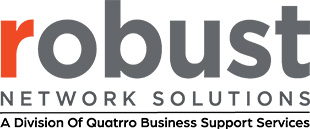Your data is a hacker’s treasure trove, and they have several different ways of hunting it down. Phishing, vishing, and smishing are three tools attackers use to dig and delve for your data. Here’s a breakdown of these threats and how you can protect yourself and your organization.
What Is Phishing?
Phishing is when an attacker sends an email, pretending it’s coming from either a respected company or a trusted individual, to trick people into divulging sensitive information, such as credit card numbers, bank account details, or passwords. In many situations, the attacker tries to make the target feel threatened or afraid, hoping that it motivates them to hand over sensitive data.
For instance, an attacker may pose as someone from your bank and send an email saying you need to change your account information because the bank has been hacked. The attacker asks you to click on a link, which will supposedly bring you to a site where you can update your login info. But the site has been designed to collect the login info you enter and provide it to your attackers.
What Is Vishing?
Vishing has the same goal as phishing — stealing sensitive data — but the attacker uses either the phone or voicemail. Vishing also typically incorporates a sense of urgency to try to motivate the victim to hand over data they would otherwise keep safe.
A visher may call you up and pretend to be from a reputable computer company, such as Apple or Microsoft. The caller may claim that you need to update your antivirus software to protect your computer from a newly discovered virus. They then ask for your credit card information so you can get the antivirus update. After you provide your data, the hacker steals it. They then either use it to take your money or sell it to another attacker.
What Is Smishing?
Like phishing and vishing, smishing involves sending out text messages that are worded in such a way as to fool the victim into providing sensitive information or financial data. This kind of attack can be levied with regular text or via an app, such as WhatsApp or Messenger. A smishing attack also frequently includes some form of pressure designed to coerce the target into making an emotional decision to hand over sensitive info.
For instance, a victim may get a text message that looks like it comes from an IRS agent. The text may claim that the IRS has discovered that you owe taxes, and you have to either text them back or call a number to take steps to rectify the situation. If you don’t do so immediately, you supposedly risk getting hit with a lawsuit or criminal penalties.
If you reply, at some point, the attacker will ask you for sensitive information. This could include your social security number or bank account information, such as the one you had a direct deposit sent to in the past. Once the victim has taken the bait, the attacker can use the ruse of needing to verify your identity to demand a wide range of personal data.
How to Stop Phishing, Vishing, and Smishing
It’s nearly impossible to prevent phishing, vishing, and smishing attackers from trying to take advantage of you, but there are several things you can do to stop an attack in its tracks. Here are a few tips to help keep you — and those in your organization — safe from these assaults:
- Educate yourself and your employees about the different kinds of attacks hackers tend to use.
- Never provide sensitive information to people unless you can verify their identity with 100% confidence.
- Never click on suspicious links in emails or text messages.
- Always double-check the email address of a message asking for personal or company information by hovering over or long-tapping it.
- Periodically hire a penetration tester to levy these kinds of attacks against your employees. The tester can tell you how they responded and reveal any problematic tendencies.
The Role of Technology Consulting in Protecting Your Organization From Phishing, Vishing, and Smishing
Because you’re busy running your business or meeting the IT needs of your team members, you may not have time to dig into the latest and most potent attack techniques — or investigate how your people would respond. This is where a cybersecurity provider can make a big difference.
With Robust Network Solutions, you can get comprehensive cybersecurity testing and intrusion prevention services that take into account the most recent phishing, vishing, and smishing attack strategies. In addition, you can take advantage of the kind of application support that makes it easier to safeguard sensitive data flowing through business apps and between collaborating team members. With Robust, you get not only a detailed view of your organization’s digital and human vulnerabilities, but also the help and tools you need to mitigate them. Learn more by connecting with Robust today.

